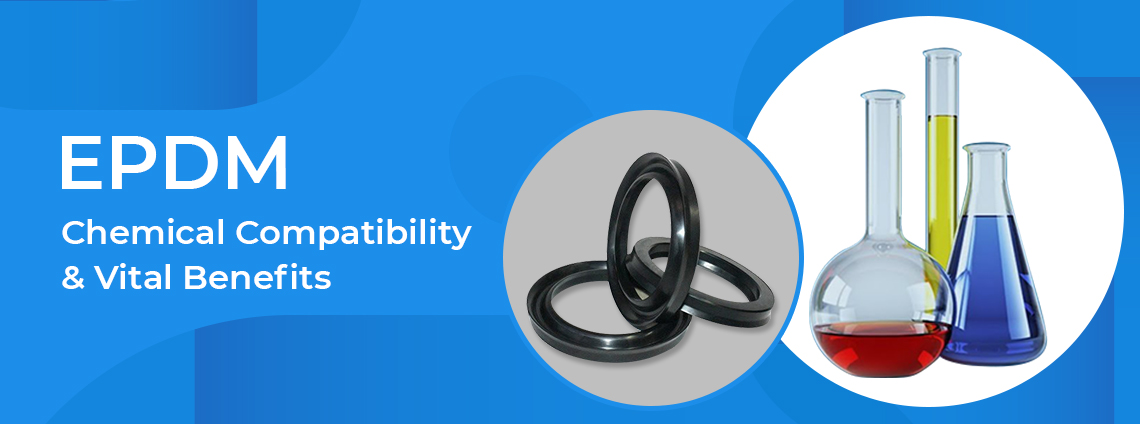Everything You Need to Know About EPDM: Chemical Compatibility & Vital Benefits
EPDM is created by combining a copolymer of ethylene and propylene (EPR) with a comonomer called diene. It is an FDA-approved non-toxic synthetic elastomer that has gained immense popularity for its chemical compatibility and resistance properties.
Due to its chemical resistance properties, it has found many applications in various industries such as automotive and medical. Let’s quickly go through some of the benefits and gain insights into the chemical compatibility of EPDM rubber.
Unique Properties of EPDM
EPDM rubber can not only offer excellent chemical resistance but also excellent resistance to UV rays, ozone, aging, and extreme weather conditions. This makes it ideal for outdoor applications. Moreover, EPDM is also one of the most waterproof rubbers available in the market. These distinct properties highlight the resilience and durability of EPDM seals.
Listed below are some more unique characteristics of EPDM rubber:
- Low compression set
- Excellent elasticity
- Hot water and steam-resistant
- Heat and cold resistance.
Chemical Compatibility of EPDM
In critical industries like medical and automobile, rubber seals are needed to protect vital components against harsh fluids and chemicals. This is where EPDM seals shine. They offer exceptional protection against the following:
- Ammonia
- Steam and hot water
- Polar solvents
- Acetamide
- Polar fluids
- Alcohols
- Acetaldehyde
- Alkaline cleaning products
EPDM also acts as a strong barrier against vapors and water since they have low absorption to water. What’s more, EPDM can provide superior compatibility and resistance against polar solvents and fluids. At high temperatures, it can offer excellent compatibility with these chemicals. This sets EPDM apart from other seals and compounds.
What are the Key Applications of EPDM?
Due to its amazing properties, various industries depend on the EPDM seals. They are very popular in the automobile industry, however, their applications can also be found in the following sectors.
Construction Sector: Water-tight applications, Roofing, HVAC systems, and expansion joints.
Medical Sector: IV components, pumps, Respiratory equipment, and drug delivery devices.
Housing: Water system o-rings, Solar panel heat collectors, electrical insulation, garden appliances such as hose, tubing, washers, and belts.
Industrial: Connectors for cables, gaskets, o-rings, electrical insulation.
Automobile Sector: Brakes, seals, low torque drive belts, cooling systems, and vehicle weather stripping.
What are the Limitations of EPDM?
Even though EPDM can be compatible with various chemicals, it is not resistant to hydrocarbon fluids. Moreover, EPDM seals can easily absorb oil and gas. Due to this, EPDM seals are not ideal for oil and gas applications.
In conclusion, EPDM is a durable rubber that has excellent chemical properties and good temperature stability, making it perfectly suited for many industries. Also, EPDM material can be found in applications ranging from WRAS, KTW, DVGW & NSF amongst others. If you are interested to know more about EPDM seals, then feel free to connect with Harkesh Rubber. We can help you select and design the appropriate rubber material for your gasket, o-ring, or seal applications.








